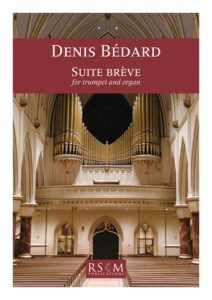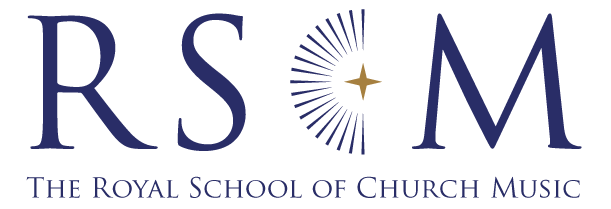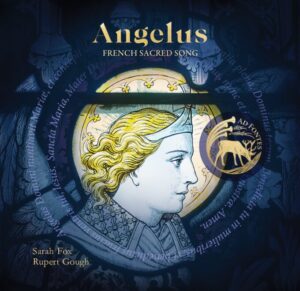Reviews of CDs
* Worth hearing
** Recommended
*** Essential listening
CHRISTMAS CDs
**
BRIAN KNOWLES: CHRISTMAS TIDINGS
Celestia Singers & Brass / David Ogden ♦ Convivium CR077
This selection of seasonal songs by Brian Knowles provides an interesting take on the Christmas story. Some of the texts might be familiar – ‘Love came down at Christmas’, ‘I sing of a maiden’, ‘We three kings’ – but the music is all newly composed by Brian Knowles. Scored for choir, brass ensemble and piano, Dancing in my heart gets the disc off to a spirited (almost cheesy) opening; Love came down at Christmas is more meditative in tone. Skydiving, written with a school choir in mind, adds a bit of fun to the Christmas story as it imagines the angels dancing about. A setting of Night Mail seems a bit out of place! The Celestia Singers, a relatively new but accomplished vocal consort, give a polished reading of this music. Diction and tone are clear and bright, and the Celestia Brass ensemble accompany with sensitivity. For a lighter, more jovial selection of Christmas music, this disc is ideal.
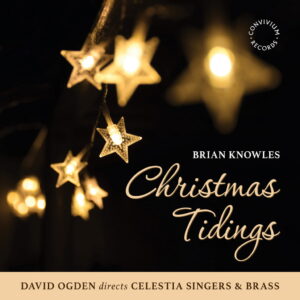
**
ONCE IN ROYAL DAVID’S CITY
Choir of St Davids Cathedral / Thomas Hawkes (organ) / Simon Pearce ♦ Priory PRCD1245
This exquisite disc of Christmas music, both familiar and not, shows the choir of St Davids Cathedral in rude health. A perfectly paced performance of Goldschmidt’s A tender shoot and Meirion Wynn Jones’s A branch so fair has blossomed are early highlights. There are three Christmas and Advent hymns: ‘O come, O come, Emmanuel’, ‘Hark! the herald angels sing’ and ‘Once in royal David’s city’. Sally Beamish’s In the stillness is also given a beautiful rendition. For fans of John Rutter, without whom many a carol service or concert would not be complete, his Nativity Carol is featured on this disc. Thomas Hawkes accompanies the choir superbly, if at times slightly under-powered; his performances of works by Bach and Dubois are expertly played. It is also good to hear Walford Davies’s setting of O little town of Bethlehem. Welsh composers, notably Meirion Wynn Jones, are well represented.
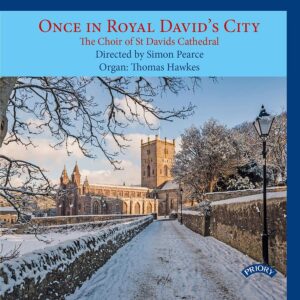
**
NOVA! NOVA! JOY TO THE WORLD
23 favourite carols arranged for choir by Louis Halsey ♦ Hertfordshire Chorus / Rufus Frowde (organ) / David Temple ♦ Signum Classics SIGCD755
This is an attractive CD of many familiar Christmas hymns and carols in arrangements by Louis Halsey for choir and organ. People looking for different, singable and listenable settings of some familiar music need not look further than this disc. ‘Joy to the world’, ‘Ding dong! merrily on high’, ‘O come, O come, Emmanuel’, ‘Deck the hall with boughs of holly’ and many others are found here. The Hertfordshire Chorus give spirited and committed performances of this repertoire. Their diction is clear and crisp, the dynamic contrasts are excellent and their command of French and German is impressive. Perhaps lacking the sheen of some choral societies, the Hertfordshire Chorus certainly give a good account of themselves. Halsey’s descants are very different from those of David Willcocks, but, if maybe you want your descants to be less over-the-top, Halsey should be your go-to!
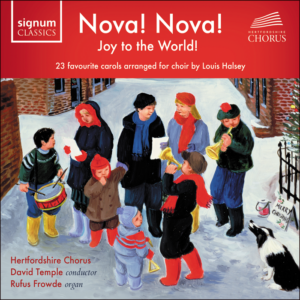
***
THE NATIVITY: PATRICK HAWES
Voce / Stephen Scarlato (organ) / Patrick Hawes (piano) / Mark Singleton ♦ Signum Classics SIGCD752
This is a charming disc of carol settings by Patrick Hawes, and also two more substantial pieces – The Nativity and Four Christmas Motets – sung to perfection by New England’s chamber choir, Voce. With impeccable diction, blend and pitching, this really is a choir at the top of their game. Hawes’s settings of more familiar texts such as What child is this?, This endernight and Lullay my liking sit alongside numerous texts by the composer’s brother Andrew Hawes. The Nativity is a work with six texts describing static elements and human protagonists of the Christmas story. The Four Christmas Motets have more traditional texts. The Nativity can be performed as a concert work or with parts included at various appropriate points in a Christmas service. Most of the music on this disc is sung a cappella to great effect. It is a lovely, meditative accompaniment to Christmas.
Ian Munro
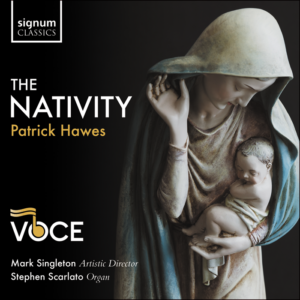
SOLO VOICE
**
ANGELUS: FRENCH SACRED SONG
Sarah Fox (soprano) / Rupert Gough (organ) / Cecily Beer (harp) ♦ Ad Fontes AF009
Amid the wealth of 19th- and 20th-century French repertoire for organ and choirs, it’s perhaps easy to overlook the writings at the time for smaller musical forces. This CD of French sacred song, recorded with the excellent Ruffatti organ in Buckfast Abbey, attempts to redress this imbalance. Franck’s attractive Panis angelicus, reworked here for soprano, harp and organ, provides a fresh perspective on a much-loved piece. The Abbey’s angelus bell also features at several points during this sequence – for example in Louis Vierne’s À l’Angélus du soir arranged by Rupert Gough for organ and harp. Sarah Fox’s voice is well suited to this repertory – hers is a mature yet clear and controlled tone. Rupert Gough is a first-class accompanist, combining both agility and expressiveness such as in Messiaen’s O sacrum convivium, performed here in its earlier incarnation for solo voice and organ. The sequence closes with Flor Peeters’s Speculum Vitae, four movements reflecting night, morning, midday and evening. Sung here in the 1958 English-language version, the effect is refreshingly palate-cleansing.
Stuart Robinson
CHORAL CDs
***
LOVE ILLUMINATES – JOANNA GILL
Chapel Choir of Selwyn College, Cambridge / Matt Denton (violin) / Emma Denton (cello) / Maria Marchant (piano) / Adam Field (organ) / Sarah MacDonald ♦ Regent Records REGCD574
The four contrasting movements of the Mass for HTB Queen’s Gate open this attractive recording of music by the young Scottish composer Joanna Gill. The Chapel Choir of Selwyn College, Cambridge gives lively and committed performances. Gill’s work is bright and tonal; Unfailing love contains subtle nods to the influence of Eric Whitacre and Morten Lauridsen. Her close harmonic writing is no problem for MacDonald’s well-drilled Selwyn choir. Sopranos have a clear, clean upper register, which allows the high notes to shine. The complex, a cappella polyphonic settings of Immortal peace and Ubi caritas show Gill’s confidence and skill as a composer. It is good to hear fresh settings of many familiar texts. While the sung texts are provided, along with a brief biography of Gill and a foreword by Paul Mealor, it is disappointing that there are no other programme notes.
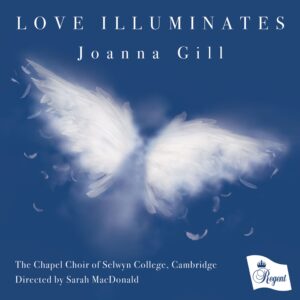
***
THE MONARCH’S MUSIC
Band of The Household Cavalry / Choir of St George’s Chapel, Windsor / Luke Bond (organ) / Major Paul Collis-Smith & James Vivian ♦ CRD CRD3545
Recorded during the Platinum Jubilee celebrations of Queen Elizabeth II in 2022, this recording of regal favourites arrives as memories fade of the coronation of King Charles III earlier this year. It is already unnatural to hear the national anthem sung as ‘God save our gracious Queen’. Rousing favourites such as Parry’s I was glad and Vaughan Williams’s Old Hundredth are given thrilling accounts by combined choral and band forces. The Band of the Household Cavalry is showcased in works such as Walton’s Crown Imperial and Elgar’s ‘Pomp and Circumstance’ March No. 4, which are given splendidly characterful renditions. Elgar’s Te Deum, Britten’s A Hymn of St Columba and Batten’s O Sing Joyfully celebrate the wonderful choir of St George’s Chapel. This recording encapsulates the quality of music making that accompanies many royal occasions.
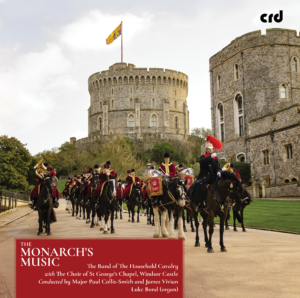
***
A YEAR AT LLANDAFF
Choir of Llandaff Cathedral / Aaron Shilson (organ) / Stephen Moore ♦ Regent Records REGCD573
This disc presents a wide selection of music, expertly sung by the choir of Llandaff Cathedral on its annual journey from Advent to All Saints. John Scott’s ethereal setting of Creator of the stars of night gives the disc an excellent start, with the various sections of the choir getting their chance to shine, and Aaron Shilson’s sensitive accompanying skills to the fore. The choir makes light work of the rhythmical and harmonic complexities of Bob Chilcott’s Nova! Nova!, Philip Lawson’s arrangement of Down to the river and Willan’s Rise up, my love, my fair one. Litaize’s Epiphanie (played by Shilson) and Leighton’s Veni Creator Spiritus (played by Stephen Moore) give soloists and Llandaff’s magnificent Nicholson organ a valuable opportunity to show their mettle. Jonathan Dove’s Vast ocean of light and Stainer’s I saw the Lord are showpieces for choir and organ that receive tremendous performances. These and other superb performances make this disc highly recommended.
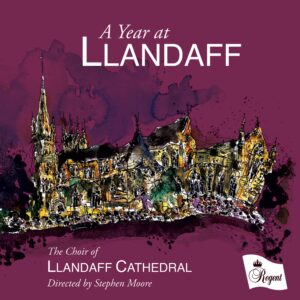
**
ORCHESTRAL ANTHEMS: ELGAR, FINZI, DYSON, HOWELLS
Choir and Girl Choristers of Merton College, Oxford / Áine Smith (soprano) / Ruairi Bowen (tenor) / William Thomas (bass) / Britten Sinfonia / Benjamin Nicholas ♦ Delphian DCD34291
This disc contains some of the cornerstones of church music repertoire. However, gone are the organ accompaniments and in their place are orchestral accompaniments, either as originally intended or subsequently orchestrated by the composer or a close colleague. There is no faulting the performance of either the choir of Merton College or the Britten Sinfonia, and Benjamin Nicholas extracts fine performances from both sets of performers. Ultimately this disc comes down to personal taste, and it’ll be for the listener to decide if it works for them. Personally, I’m not sure Bairstow’s Blessed city, heavenly Salem is suited to a string orchestra accompaniment. Elgar’s Ecce sacerdos magnus and Dyson’s Canticles in D, however, work well in orchestral arrangements. The rich and indulgent orchestral textures of Finzi’s Lo, the full, final sacrifice and Vaughan Williams’s Te Deum in G are in danger of overpowering the vocal parts. Nevertheless, captured on disc are wonderfully committed performances of some rather intriguing original orchestrations and arrangements.
Ian Munro
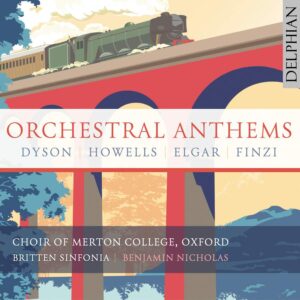
BOOKS
DECK THE HALL: THE STORIES OF OUR FAVOURITE CHRISTMAS CAROLS
Andrew Gant
Hodder & Stoughton 346pp. HB 978-1-39-980749-4 £16.99
If you’re looking for a stocking filler for a church musician relative or friend, this seasonal number might fit the bill. To my mind some of the musical language would be meaningless to the layperson. Nonetheless, Andrew Gant’s wacky sense of humour pervades throughout as he takes us on a thorough (and I mean thorough) explanation in each case of 27 so-called favourite carols. There’s no singular list of right answers, of course, but you might feel – as I did – that there are one or two glaring omissions. The selection here ranges from ‘I wonder as I wander’ and ‘Angelus ad virginem’ to ‘Quem pastores’ and finally ‘We wish you a merry Christmas’. The chapter detailing the origins of ‘Of the Father’s heart begotten’ is typical of some requiring considerable concentration. Gant writes, ‘Tracing the history of our carol tradition can be a bit like trying to sweep up all the stray pine needles when you’ve taken down the Christmas tree.’ Without wanting to take away from the considerable and forensic amount of research – and there are all kinds of nuggets – this book could well have done with more rigorous scrutiny and trimming at the editing stage. This is probably the sort of book for curling up with in front of an open fire this Christmas.
Stuart Robinson
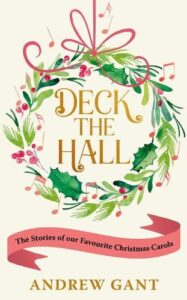
Reviews of printed music
CHORAL MUSIC
E Easy
M Medium
D Difficult
FLEXIBLE ANTHEMS
TWO-PART ANTHEMS: 15 FLEXIBLE ANTHEMS FOR THE CHURCH YEAR [mostly E]
ed. Philip Moore
Two-part mixed voices with keyboard
RSCM RAB89 £9.95
The idea of two-part mixed voices is good for choirs that are not always strong enough to manage four separate parts. With two vocal parts plus accompaniment, tenors double sopranos (at the octave) and basses double altos (ditto); the effect can be of a full choir singing with more confidence and warmth than with conventional four-part writing. The music needs to be well written and designed to work in this way, as these 15 pieces do. They mostly also work ‘unmixed’, with all upper voices on the top line and all lower voices on the second line, or with just two-part sopranos and altos, or only two-part tenors and basses: truly flexible!
The selection of pieces covers many of the seasons of the church year. The occasional third ‘descant’ part is optional, or, in Barry Ferguson’s Bishop Ken’s Prayer, lasts just two bars. The anthem may be based on a well-known tune, such as Philip Moore’s Jesus, Lord, we look to thee. In This joyful Eastertide Sarah MacDonald uses the expected tune and also starts with all parts in unison. A unison (or octave) opening tune helps to give confidence with a newly composed piece such as Joanna Forbes L’Estrange’s Let my prayer rise up and Philip Moore’s Lord, be thy word my rule; other pieces could be treated the same way even when not specified, such as Barry Rose’s Love came down at Christmas. Paul Trepte’s Saviour of the world suggests optionally only tenors and basses for some bars and sopranos and altos for others, to give more variety of texture. His The King of Love, using Dominus regit me as the tune, is the one piece where S/A is specified for the top line and T/B for the lower line, rather than mixing the voices.
Ghislaine Reece-Trapp’s Lenten Wilt thou forgive, Caroline Leighton’s Agony in the Garden for Holy Week, Amy Summers’s setting of I will lift up mine eyes unto the hills (a popular text for funeral and memorial services), Peter Nardone’s Jesus, tender shepherd, hear me and Roger Williams’s Eucharistic O sacrum convivium show more of the range covered. Philip Moore describes two-part mixed vocal scoring as ‘a highly effective way of writing’; this volume will be appreciated by many choirs of whatever size.
Julian Elloway
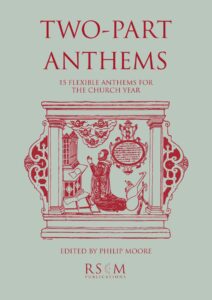
CHRISTMAS MUSIC
CAROLS OF OUR TIME [E–D]
ed. Sarah MacDonald and Timothy Rogers
SATB with and without accompaniment
Encore Publications 020764 £18.95
This would be an interesting and recommendable collection even without the extra feature that all 27 pieces are written or arranged by women. The book is effectively in two parts. To start are eight carols with descants by Sarah MacDonald, covering perhaps the eight most popular congregational carols, originally arranged last year for Harry Christophers and The Sixteen. Comparing these eight with those written by David Willcocks over 60 years ago, it is tempting to compare the boys of King’s College at that time with the girls of Ely Cathedral (trained by MacDonald) today. Her descant lines are often more energetic and the organ parts have more rhythmic drive. Sometimes one detects a knowing smile, as in the final verse of ‘O come, all ye faithful’, when, after avoiding the chord on ‘Word’, MacDonald drops in Willcocks’s descant ‘O come’ (from his previous verse) and continues upwards with a final verse descant. The new harmonizations of the initial verses of ‘Come, thou Redeemer of the earth’, ‘O come, O come, Emmanuel’ and ‘Of the Father’s heart begotten’ are especially good.
The music of the 19 new carols ranges from accomplished but conventional arrangements by June Nixon and Eleanor Daley to such imaginative pieces as Electra Perivolaris’s There is no rose, full of musical invention and excitement at the ‘rose’ that ‘contained heaven and earth’, and When God made Eve with words and music by Yshani Perinpanayagam. Tamsin Jones has rhythmic fun with Tomorrow shall be my dancing day, while Ghislaine Reece-Trapp dances through Veni, Redemptor gentium. Kerry Boyle’s treatment of Silent night has an Austrian feel (and a lovely key change). I reviewed Charlotte Baskerville’s atmospheric Creator of the stars of light in last September’s Sunday by Sunday. Sarah MacDonald’s Love is come has a tune repeated over five verses with varied vocal textures and organ part, a tune which is notable for having two four-bar phrases followed by two five-bar ones. Each verse ends with a different description of how love has come on earth. Other composers and arrangers include Esther Bersweden, Sasha Johnson Manning, Stephanie Martin, Lucy Walker and Alison Willis. A suggested list of readings and repertoire from this book for a Nine Lessons and Carols is included, as is a table of use for seasons other than Christmas.
Stephen Patterson
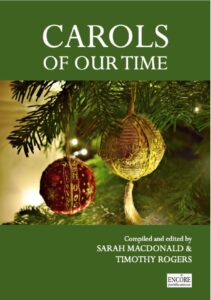
INFANT HOLY, INFANT LOWLY [E]
arr. Stephen Cleobury
SATB
Encore Publications 020738 £2.10
BECOMES BETHLEHEM [E/M]
Mark Sirett
SATB and piano
Boosey & Hawkes BH48557 £2.25
PEACE FROM GOD [E]
arr. Timothy Rogers
SATB
Encore Publications 020727 £2.10
The familiar English words of Infant holy, infant lowly are included along with the original Polish (W żłobie leży), both languages set out for singing. Stephen Cleobury originally arranged it in Polish for the 1993 Christmas Eve King’s College service. The setting is more straightforward than the Willcocks setting (and with the barlines in the right place!).
Mark Sirett’s extended Christmas anthem, Becomes Bethlehem, has a strong feel-good factor: ‘justice, peace, wonder’ are the ‘words for the future’ after Christ’s birth when ‘the world becomes home’. The feeling of the words is matched by the musical language – if you like your Christmas to be well sweetened, you may enjoy this piece by a composer who is a master of effective choral writing.
Peace, faith and hope feature in Peace from God, Timothy Rogers’s simple adaptation of a Ukrainian folksong – rightly simple because music and text need no further embellishment. In the first verse, ‘Peace we may not understand in a weary strife-worn land’, is seen in the second verse with eyes of faith, and, in the third, ‘Hope, new-born on this glad day, God shall wipe our tears away … Emmanuel.’ I hope that lots of choirs will sing it this Christmas. A version with Easter words, Peace, faith and hope, was reviewed last March in Sunday by Sunday.
REJOICE! [M/E]
Rhiannon Randle
SATB
Boosey & Hawkes BH13850 £3.25
O MAGNUM MYSTERIUM [D]
Richard Peat
SSAATTBB
Encore Publications 020701 £2.95
Rejoice! is an exciting, joyful setting of an English version of the Christmas Day gradual Viderunt Omnes, starting ‘All the ends of the world have seen the salvation of our Lord.’ It quotes from the plainchant, although staccato and ‘excited but hushed’ at the start, before being transformed as the music dances in triple time with one beat per bar. It is not easy, but would be well worth the rehearsal time.
In contrast is Richard Peat’s setting of the Christmas Day responsory O magnum mysterium, The Latin text is set in slow-moving chords, building up to eight parts, ‘misterioso (con intensità)’, growing from a quiet opening to a fortissimo climax with Alleluias, just before the end. Within this slow journey, on two occasions pairs of solo voices provide a contrasting texture with flowing quavers. At the end, the ‘great mystery’ returns, as at the opening.
James L. Montgomery
LENT AND PASSIONTIDE
AVE REGINA CAELORUM [M]
Kerensa Briggs
SATB with divisions
Boosey and Hawkes BH13780 £2.75
JESU, THE VERY THOUGHT OF THEE [M]
Alison Willis
SATB
Encore Publications 020721 £2.10
Ave Regina caelorum, the Marian antiphon sung at the end of compline during Lent, is given a beautiful setting by Kerensa Briggs. A reflective choral phrase punctuates lines of plainchant, with a more forthright central section for ‘Gaude Virgo gloriosa’. Harmonies are mostly based on fourths and the whole short piece has a feeling of heavenly calm.
Alison Willis has written an attractive setting of verses from Caswall’s translation of Bernard of Clairvaux’s hymn. After the opening ‘Jesu, the very thought of thee’, she has selected, from the original 48 stanzas, three that are not normally found in our hymn books, but form a devotional motet for Passiontide. Here the second verse starts ‘With Mary to thy tomb I’ll haste’, and the third ‘Beside thy grave will make my moan and sob my heart away’. There is consolation though, and the music effectively matches the bittersweet feeling.
James L. Montgomery
ORGAN MUSIC
E Easy
M Medium
D Difficult
CHRISTMAS ORGAN MUSIC
THE OXFORD BOOK OF CHRISTMAS ORGAN MUSIC: BOOK 2 [mostly M–M/D ]
compiled by Robert Gower
Oxford 978-0-19-356063-5 £23.50
Nearly 30 years after the publication of OUP’s first Christmas Organ Music anthology, this second book strides into the 21st century with a refreshing and forward-looking selection of pieces. At least one of the new composers represented here was not even born when the first book appeared.
Living composers include such rising stars as Kristina Arakelyan, whose Prelude on ‘Carol of the Bells’ has fun as it whirls about and is almost over too soon, and Amy Summers, whose charming Prelude on ‘Deck the Halls’ is as described in its tempo mark, ‘merry, flowing’. David Bednall’s Sortie on ‘Mendelssohn’ is not (quite) as difficult as it sounds, with French toccata-like treatments of the tune. Mark Blatchly, Richard Elliott and Howard Skempton provide more quirky approaches, the first two using well-known tunes, and Skempton with an evocation of Christmas Bells. Ian Farrington (Prelude on ‘Gabriel’s Message’) and Benjamin Lamb (Passacaglia and Chorale on ‘The Truth from Above’) are more atmospheric, perhaps depicting the enormity of what is being described. I am glad to have discovered Guy Bovet’s Prelude on ‘Stille Nacht, heilige Nacht’, while Alfred Fedak’s Impression on ‘We Three Kings’ is a slow tango that should be a hit at Epiphany.
Within this same volume, players can now find the Boyse version of Adam’s ‘O holy night’ (titled Noël), Thomas Trotter’s arrangement of Sleigh Ride, and chorale preludes on Nun komm der Heiden Heiland by Buxtehude and Von Himmel hoch by Pachelbel, the latter confusingly called Chant de Noël in an edition by Guilmant with added tempo indications and some anachronistic phrase marks. A noël by Dandrieu uses the Puer nobis nascitur tune that will be recognized when used as a voluntary. I didn’t previously know Duruflé’s Prélude sur l’Introït de l’Épiphanie, nor the Wachet auf, ruft uns die Stimme chorale prelude by J.S. Bach’s pupil Gottfried Homilius, with the tune in canon between right hand and pedals and a spritely ‘waking up’ figure in the left hand. Pieces by Hedwige Chrétien, Elizabeth Mounsey and Florence Price among others also feature in the wide-ranging contents.
Robert Gower is to be congratulated on a varied compilation of 34 pieces that should prove at least as useful and enduring as the first volume.
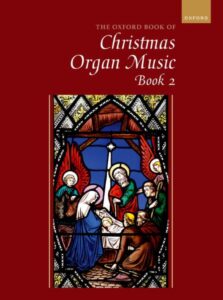
PRÉLUDE–PRIÈRE–FINAL [M–D]
Camille Saint-Saëns
arr. O. Depenheuer, J. Permann and E. Gigout
CHRISTMAS [M]
Friedrich Nietzsche
arr. Otto Depenheuer
Edition Dohr (Universal Edition) 20475/20401 £9.50 each
The three movements from the Christmas Oratorio by Camille Saint-Säens (1835–1921) include the opening ‘Prélude (dans le style de J.S. Bach)’ that also appears under the title ‘Pastorale’ in the Oxford Christmas volume reviewed above, where the arranger is Martin Setchell. In the Saint-Saëns volume under review here, a new arrangement of the Prélude by Otto Depenheuer precedes two late 19th-century arrangements. Joseph Permann adapts the vocal trio ‘Tecum principum’ into an effective, if tricky, Prière. Eugène Gigout’s approach to the final chorus is to use it as the starting point for a grand ‘organ paraphrase’. Despite the different arrangers viewing their tasks in different ways, the whole works surprisingly well as a Christmas triptych.
The philosopher Friedrich Nietzsche (1844–1900) was also a talented amateur composer. He never completed his Christmas Oratorio, but four movements are sufficiently complete to be arranged to form this little suite with Introduction, Interlude, ‘Chorus of Shepherds’ and, to finish, an ‘Introduction to the Annunciation’ that Nietzsche was to turn into a piano duet, Monodie à deux, as a wedding present for a friend. One can see why Nietzsche never managed to complete the large-scale oratorio, but these four miniatures have musical interest as well as being examples of the importance to him of musical expression: as he wrote, ‘Without music, life would be a mistake.’
NATIVITAS [M]
Philip Moore
Encore Publications 010036 £12.95
This ‘Sequence for Advent and Christmas’ has nine poems by David Broadbridge that explore seasonal themes from Adam’s Fall through the Annunciation, Mary and Joseph and the Christ Child to Simeon who ‘knows that his Redeemer lives’. Rather than setting these words to music, Philip Moore provides a prelude and nine musical reflections to follow each poem. Broadbridge writes that he ‘wanted to keep the language as simple and direct as possible … [with] no complications of meaning or difficulty of understanding’. Something similar might be said of Philip Moore’s musical language, but poet and composer show technical skill and subtlety of interpretation as they embrace a variety of structural forms on what is a journey – as Philip Moore points out, the Nativity narrative is a story of journeys. In this sequence, the journey ends with musical ideas from the Nunc Dimittis of Stanford in G, in a reflection on Simeon with the Christ Child: quietly reflective and spiritually alive.
Duncan Watkins
DENIS BÉDARD
SUITE DU TROISIÈME TON [M]
Denis Bédard
Éditions Cheldar / RSCM CH92 £9.00
QUATRE PIÈCES
CONTEMPLATIVES [M]
FOUR PIECES IN JAZZ STYLE [M/D]
Denis Bédard
Éditions Cheldar / RSCM CH91 and CH90 £7.20 each
PETITE RHAPSODIE [D]
Denis Bédard
Éditions Cheldar / RSCM CH89 £6.00
Canadian organist and composer Denis Bédard is fast becoming one of the most popular composers published by the RSCM; with this collection of four publications of his music it is easy to see why. While not straightforward, with a bit of work Bédard’s compositions are hugely rewarding to play and enjoyed by church congregations and concert audiences alike. The Suite du troisième ton is an attractive collection of seven movements for organ, each one characterful and exploring different techniques and timbres. The Quatre Pièces Contemplatives offer more meditative pieces for organ, exploring the softer timbres of the instrument and ideal for playing during communion or more contemplative times in a service. Bédard’s Four Pieces in Jazz Style are a light-hearted yet challenging set of pieces, ideal for a snazzy voluntary or recital programme, with the second movement for pedals only. His Petite Rhapsodie is a rhythmical tour de force for the organ. Highly chromatic and rhythmical (and featuring many cross-rhythms), this is a virtuosic showpiece for the performer. Each of these volumes is highly attractive and contains music suitable for the advanced and intermediate organist. As with all RSCM publications, the music is laid out so that it is easy to read, with registrations clearly shown. The only disappointment is the lack of a programme note that would go some way to helping put the pieces in context (where appropriate). Overall, these are an exciting addition to any organist’s repertoire.
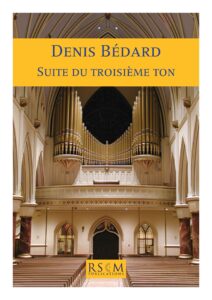
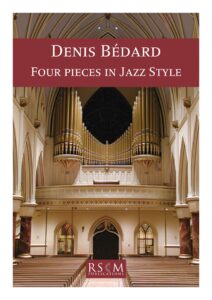
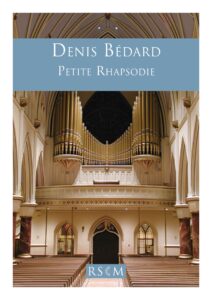
SUITE BRÈVE FOR TRUMPET AND ORGAN [M/D]
Denis Bédard
Éditions Cheldar / RSCM CH88 £7.20
The four movements of this characterful suite for trumpet and organ would make an attractive and original inclusion in any recital programme. The quiet yet stately Aurore opens this suite and, perhaps rather cunningly, allows trumpet and organ to check balance before progressing with the subsequent movements. It is a delightful piece, which allows the instruments to blend. The second movement, Mignardise, is more rhythmical and chromatic. Punchy organ chords allow the solo trumpet to do most of the work, but not without some quirky interplay between organ and trumpet that brings the music to a thrilling conclusion. The third, a more gentile Andante tranquillo that is quite bluesy in style with plenty of jazz-inspired chords, leads into a fast, lively Final. Overall it is a great showcase for trumpet and organ. The trumpet part comes in a separate booklet, which, with the organ score, forms a neatly laid out and clearly legible document. For the organist there are some tricky but unavoidable page turns that the player will need to decide how to overcome. However, musically it is a most satisfying piece and a welcome inclusion to the ever-growing repertoire for organ and trumpet.
Ian Munro
